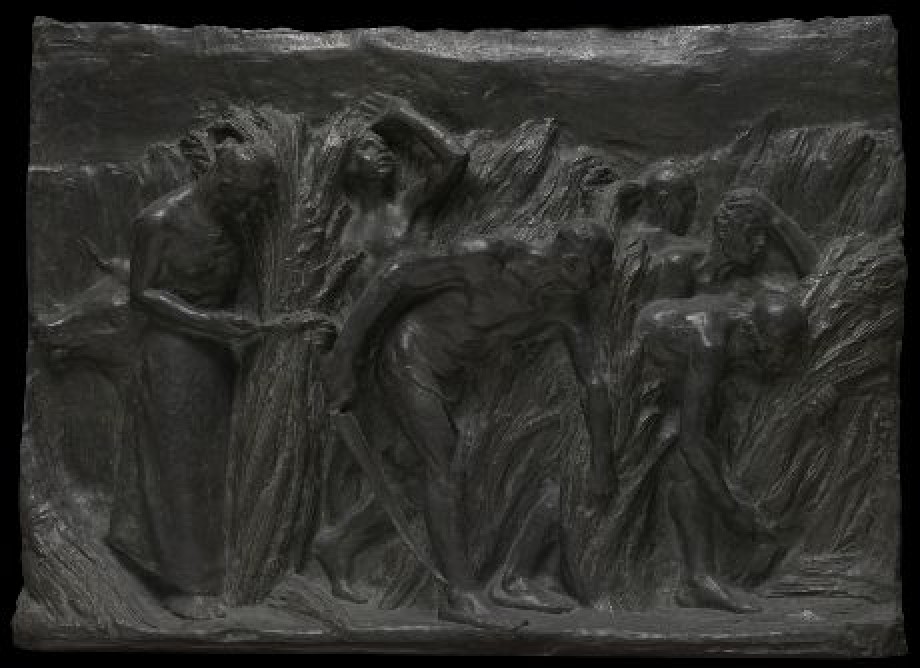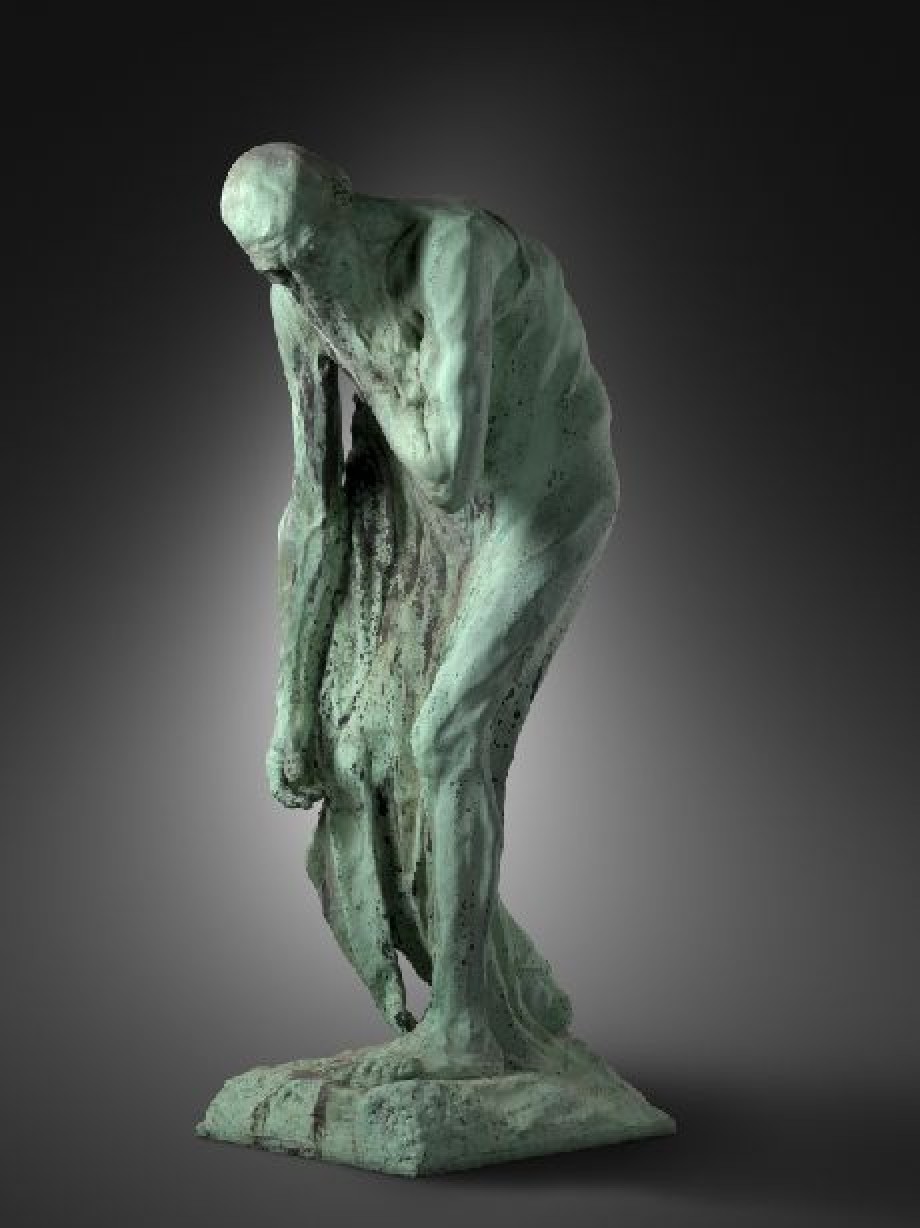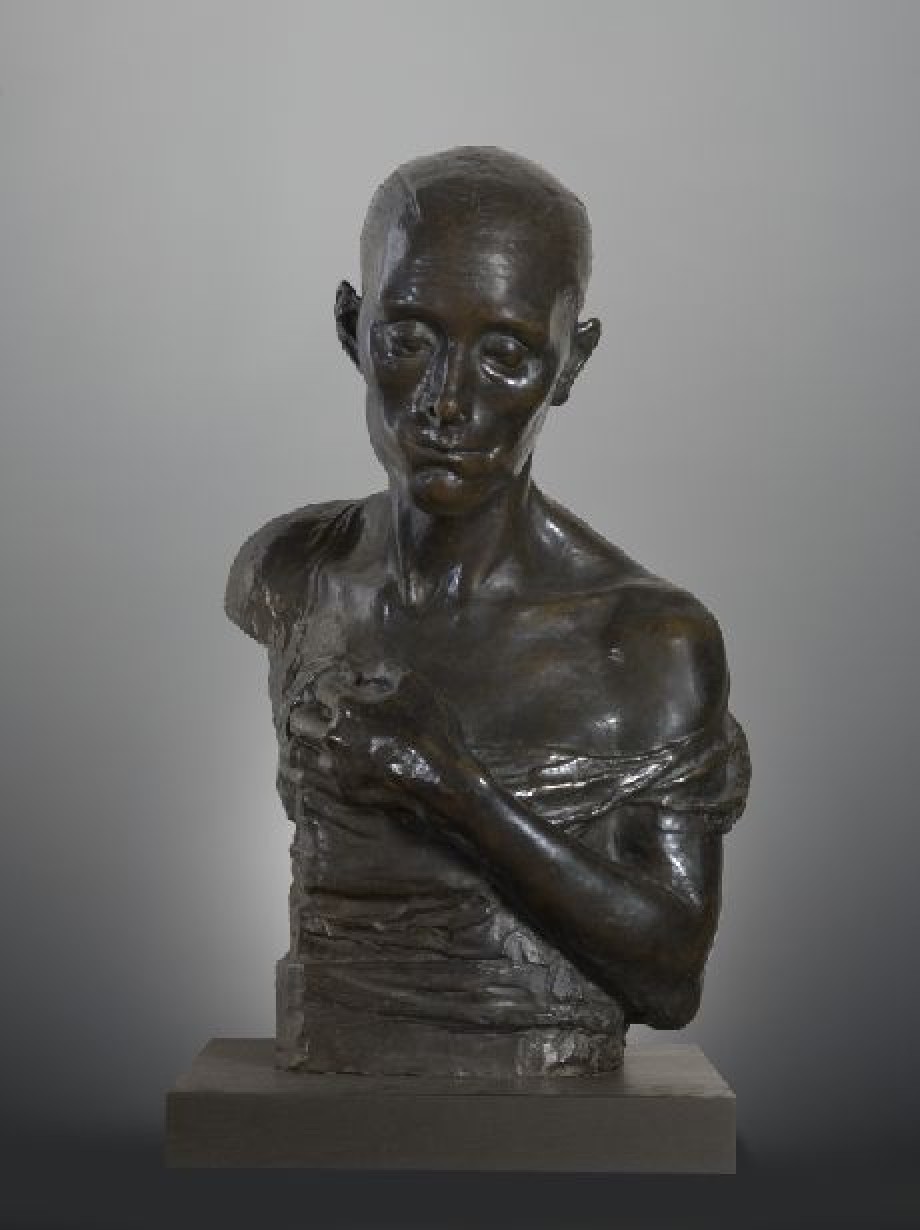The Kiss

Artist / maker
Jef Lambeaux (sculptor)Date
1881Period
19th centuryCollection
Royal Museum of Fine Arts Antwerp
A youth runs after a girl as if in a ballet, ‘captures’ her and wants to kiss her. She pushes him away, but it is clear from the mischievous look on her face and the position of her hands that she is perfectly willing to be caught. They are displaying their naked, perfectly formed bodies unashamedly to the viewer. This…
Read more
A youth runs after a girl as if in a ballet, ‘captures’ her and wants to kiss her. She pushes him away, but it is clear from the mischievous look on her face and the position of her hands that she is perfectly willing to be caught. They are displaying their naked, perfectly formed bodies unashamedly to the viewer. This is refined and sensual nudity.
There were many reactions when this statue was displayed at the Triennial Brussels Salon in 1881. Lambeaux abandoned the customary static and artificial nature of sculpture. He opted instead for exuberant expression, a supple dynamic and a fragmented modelling. It was not only the form that caused a stir, the nudity did too. It was not new in sculpture, of course, but until then it had been used for historical, mythological, religious or allegorical subjects. Lambeaux is portraying an ‘ordinary’ kiss, which was a new secular subject at the time. Rodin’s influence is undeniable. The French sculptor was making refined and graceful sculptures around 1880 that have great restraint. Lambeaux wrote in a letter to a collector friend:
'Je l’avais [Rodin] bien étudié à Paris déjà.’(‘I already studied him [Rodin] well in Paris’) (Solvay, p. 59).
The press reactions were as one would expect. The conservative journal De Vlaamsche School was not amused by the nudity, calling The kiss ‘indelicate’. L’Art Moderne, an avant-garde paper, regarded the shameless nudity of the figures as a renewal of the traditional academic nude, but also singled out errors in the execution. Vincent van Gogh also took a close look at The kiss when he was studying at the Antwerp academy in 1886. In a letter of 2 January that year to his brother Theo he called it ‘superb’ and Lambeaux a ‘first-rate’ artist. The sculpture encouraged him to draw more nude studies.
The plaster model that Lambeaux presented in Brussels was preceded by one in wax. He made that study in 1881, after his return from a two-year stay in Paris. He quite often worked with live models, and had got a youth and a girl to pose for him in his studio (G.H. Dumont). The wax design was bought by Emile Cauderlier, a wealthy writer of Ghent who supported the artist.
On 3 November 1881, after the Brussels Salon had closed, Lambeaux offered his group to the Ministry of Internal Affairs for 1,800 francs, a price that barely covered his expenses. The minister suggested placing the plaster group in the Antwerp museum, at least if the City of Antwerp was prepared to pay half the amount. The local authorities, though, said that no plaster statues were permitted in the museum, only bronze and marble ones. The minister replied that the work would be cast in bronze, provided the artist agreed to make a few necessary modifications. Lambeaux’s colleague Thomas Vinçotte had already suggested as much in the interests of stability.
The price for The kiss eventually rose of the 7,000 francs, with the ministry and the city each paying half. On 4 January 1882 the ministry transferred 3,500 francs to Antwerp. On 20 October that year the Compagnie des Bronzes in Brussels wrote to the burgomaster that the work of art was ready. The sculpture arrived at the academy on 8 December, and was put on display in the museum in Mutsaardstraat, the forerunner of the KMSKA.
The kiss was Lambeaux’s first major work, and represented a turning point in his career. It was his first work to be bought by a museum, despite the controversy. His fee and a bursary enabled him to go to Italy, where the sculptures of Cellini, Giambologna, Michelangelo and Bernini, with their powerful forms and vigorous movements had an overpowering influence on his subsequent statues, such as the Brabo fountain on the Grote Markt in Antwerp. Lambeaux’s later oeuvre is more ponderous and exuberant. It lacks the elegance and delicate finish of The kiss.
The kiss was exhibited regularly, at the Antwerp World’s Fair in 1885, the Ausstellung Belgischer Kunst in Berlin (1908), the Jef Lambeaux retrospective in Antwerp (1909), and the Exposition de l’Art Belge, Ancien et Moderne in Paris (1923). Bronze reductions of it also came onto the market. The KMSKA has one of them (inv. no. 2463), as does the KMSKB (inv. no. 4087) and the Leuven Museum M (inv. no. C/260).
Read less











